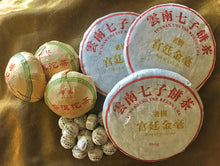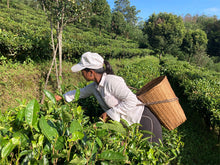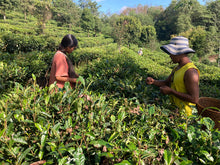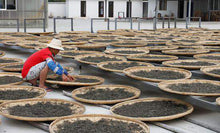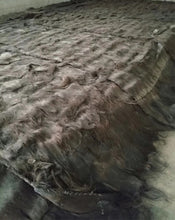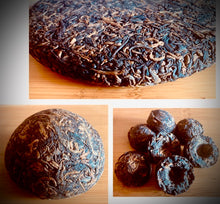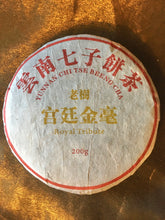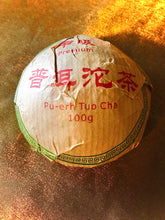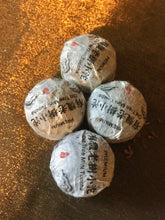
Flavor Profie: This "shu" puerh ("ripe," or "black" puerh) yields a smooth, rich palate with subtle notes of dark chocolate, sweet Chinese date and deep, lasting finish, enhanced by the exclusive selection of highest grade sifted leaf material known as "Gong Ting." PAIRS WELL with FORMULA No.8: Herbal Coffee, FORMULA No.23: ANTI-INFLAMMATORY CHAI
Steeping Guidelines: 2 tsp | 8oz | 208 F | 1-2 min | Steep at least three times.
Origin: Wokan Shan, Yunnan Province, China
Cultivation & Processing: These elegant heirloom puerh tea leaves come from old growth bushes, which have been bio-dynamically tended from seed since the 1960s without a shred on any chemical ever. We call this one "Gold Leaf" due to its exceptional quality and the many gold colored leaves scattered through the cakes and tuochas, which come from earlier plucking when each tender tea shoot still has the coveted bud leaf. The leaf material comes entirely from one small garden, unlike many other Yunnan Shu Pu-erh teas, which use blended material from multiple different tea gardens. And the "pressed" form into the cakes and tuocha bulbs and buds promotes proper aging as well as excellent transport. The well-treated and highly valued tea pickers are families of the local indigenous Wa people.
Deep Steep Info: The key trait that makes a Puerh Tea unique is that it is fermented. There are a lot of questions and differing information about this around tea communities. Specifically the difference between fermentation and oxidation. Sometimes meaning is lost in translation from the Chinese to the English. In general, oxidation is what darkens the leaves to make black tea and partial oxidation (darkened edges) makes oolong tea. Fermentation is different. It is a slower, longer process. The other key trait that makes a tea genuine "Puerh" tea is that it comes from Yunnan province, China. Puerh is the name of the historic trading city in the province. Just how true "Champagne" must come from Champagne, France, the regional terroir and climate create a unique botanical product, impossible to duplicate anywhere else.
There are lovely ceremonial "tea knives" used to break off pieces to steep, but any butter knife will do. Always "rinse" the leaves first with a splash of boiled water that you strain off right away. This is both ceremonial and functional, opening the leaves and prepping them for smooth, rich palate.
Botanical Name: Camellia sinensis (CAFFEINATED)
Herbal Actions: Antiviral, Adaptogen companion (enhances adaptogenic effects), Antioxidant and more...
ADAPTOGENIC ACTIONS: Camellia Teas, particularly green, less oxidized teas, are some of the most powerful 'adaptogen companion" herbs. These are plant medicines that when taken together with adaptogenic herbs, enhance the stress-hormone-balancing, detoxifying, antioxidant, anti-inflammatory, and immune-boosting health benefits.











